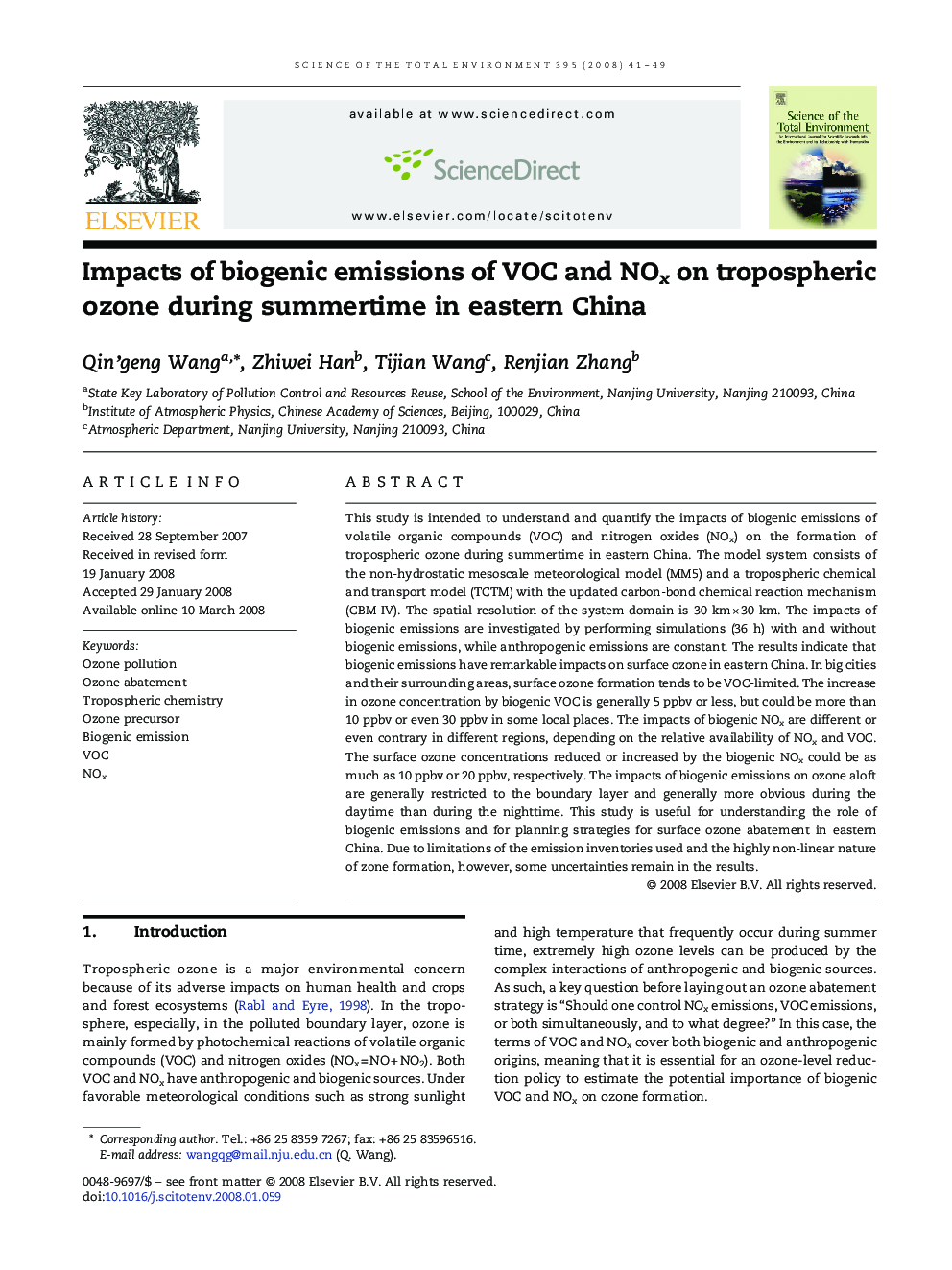| Article ID | Journal | Published Year | Pages | File Type |
|---|---|---|---|---|
| 4432823 | Science of The Total Environment | 2008 | 9 Pages |
This study is intended to understand and quantify the impacts of biogenic emissions of volatile organic compounds (VOC) and nitrogen oxides (NOx) on the formation of tropospheric ozone during summertime in eastern China. The model system consists of the non-hydrostatic mesoscale meteorological model (MM5) and a tropospheric chemical and transport model (TCTM) with the updated carbon-bond chemical reaction mechanism (CBM-IV). The spatial resolution of the system domain is 30 km × 30 km. The impacts of biogenic emissions are investigated by performing simulations (36 h) with and without biogenic emissions, while anthropogenic emissions are constant. The results indicate that biogenic emissions have remarkable impacts on surface ozone in eastern China. In big cities and their surrounding areas, surface ozone formation tends to be VOC-limited. The increase in ozone concentration by biogenic VOC is generally 5 ppbv or less, but could be more than 10 ppbv or even 30 ppbv in some local places. The impacts of biogenic NOx are different or even contrary in different regions, depending on the relative availability of NOx and VOC. The surface ozone concentrations reduced or increased by the biogenic NOx could be as much as 10 ppbv or 20 ppbv, respectively. The impacts of biogenic emissions on ozone aloft are generally restricted to the boundary layer and generally more obvious during the daytime than during the nighttime. This study is useful for understanding the role of biogenic emissions and for planning strategies for surface ozone abatement in eastern China. Due to limitations of the emission inventories used and the highly non-linear nature of zone formation, however, some uncertainties remain in the results.
